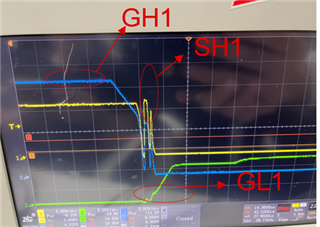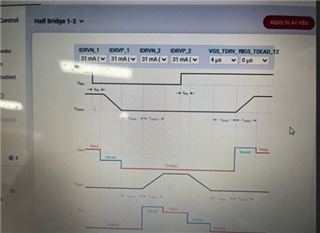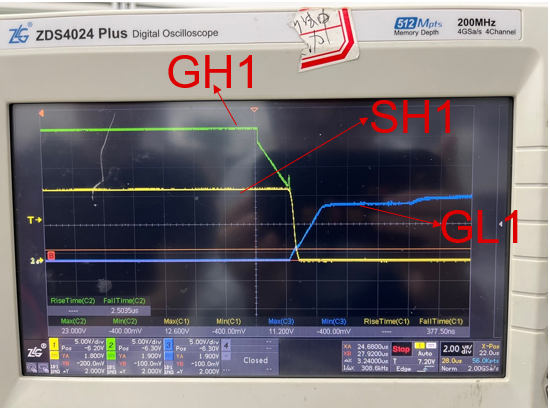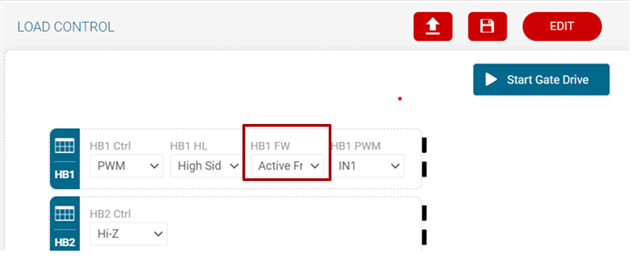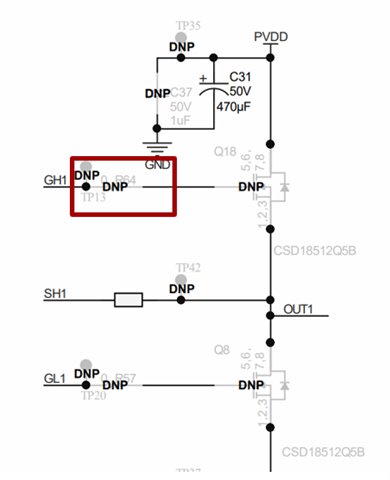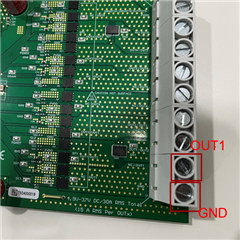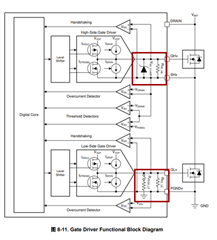When I use the DRV8718S-Q1 EVM to driving the motor , I set the EVM in PWM control mode to control the high-side MOSFET.PWM's frequency is 20Khz. But i find have an oscillation will occur on the falling edge of the PWM , which can be partially eliminated in the active freewheel mode, but cannot be completely eliminated, and this abnormal waveform will be fed to the GH pin by the output. Have you ever encountered this?
problem, and is there a solution?
The oscillating waveform is as shown in the figure below




